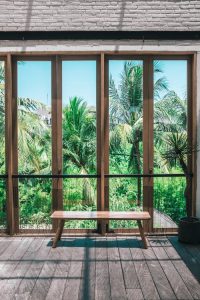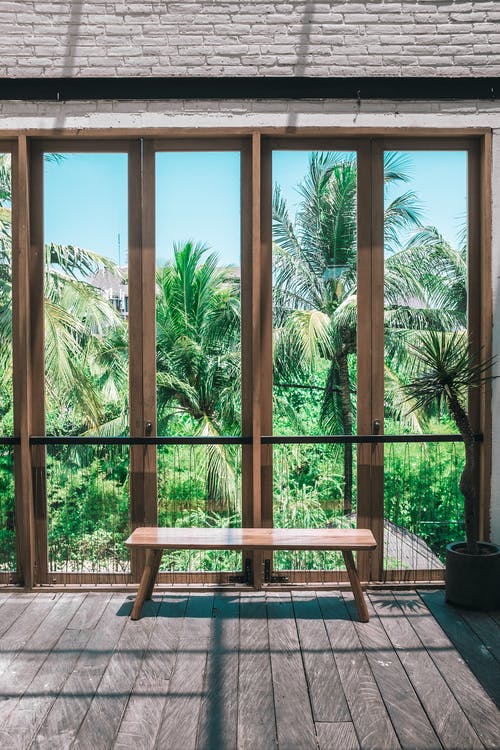 Changes in daily life and business due to COVID-19 have improved air quality. This shows how rapidly sustainable interior design changes can have an environmental impact.
Changes in daily life and business due to COVID-19 have improved air quality. This shows how rapidly sustainable interior design changes can have an environmental impact.
Making socially and environmentally responsible choices is hard. This is why you need an expert with significant training and access to the newest knowledge.
A designer may help you live healthier and safer and reduce your energy and carbon footprint. Professional homebuilders and interior designers use a desktop programmer called HOME DESIGNER to draw up floor plans and perspective views of finished structures.
Contents
What’s Green Interior Design?
Energy efficiency, resource conservation, and health are essential to “green” interior design. When constructing or redesigning an interior, increasing energy efficiency decreases pollutants and saves resources over time.
While boosting energy efficiency is sometimes more expensive initially, reducing energy use saves money and pays for itself.
Using limited resources wisely is key to the resource-conscious design. Interiors designed for long, adaptive life or ultimate reuse save resources by avoiding the need for remodels or waste in future remodels.
The green interior design preserves human health by promoting wellness and reducing indoor air pollution. “Green” interior design is forward-thinking, increasing users’ lives today and in the future while safeguarding the environment for years to come.
Are ‘Green’ Products The Same As Sustainable Ones?
Although they are interchangeable, these two terms mean different things. Alison G. Kwok and Walter Grondzik, authors of The Green Studio Handbook, state their preference for “green” as defined by grading systems like LEED.
As a result of the criteria established by these stringent rating systems, we clearly understand what counts as “green” and what does not, providing a practical, modern meaning of the term. What matters as “green” varies over time as more people adopt eco-friendly behaviors.
Since “sustainability” is more of a mindset than a technical requirement, it can be more challenging to evaluate if anything satisfies it.
The World Congress of Architects defines sustainability as “meeting or satisfying the needs of the current generation without diminishing or compromising the ability of future generations to meet their own needs,” which Annette K. Stelmack adopts in Sustainable Residential Interiors for the American Society of Interior Designers.
Unlike definitions that depend on the present realities, this one is built on ideals and stands the test of time. True sustainability today guarantees continued sustainability the next day.
Sustainable is the term of choice here at the Design Institute of San Diego, even over “green.” As a company that cares about the world around it and the people in it, we see “green” standards as the bare minimum.
We want to be pioneers in environmental design, exploring the limits of eco-friendly architecture and pursuing the ideal of fully sustainable interior architecture.
Sustainability in design is essential in any language you use to explain it. The good news is that you do not have to sacrifice your taste.
Any architectural aesthetic, from Neoclassical to midcentury contemporary and beyond, may be executed sustainably.
Dozen Examples Of Environmentally Friendly Formulations
Don’t Use Any Organic Ingredients that Could Easily Dissolve
Choosing the proper carpet can improve your quality of life and lung function.
The condition of one’s lungs is critical at present. It’s essential to keep your lungs healthy. Paints and carpets can be dangerous due to their off-gassing of volatile organic chemicals.
Use only no or low VOC products and materials to protect the air quality in your home or workplace and make breathing easier.
Utilization of Preexisting Materials
The surfboard is a good-looking wall for this outdoor shower.
Remember the old environmental mantra: “Reduce, reuse, recycle.” Repurposing robust materials like those used in the building gives them a second chance at life, which may be rewarding in unexpected ways.
Is there a desire to know more? In his book Resource Salvation: The Architecture of Reuse, author Mark Gorgolewski investigates several recycling strategies.
Choose Long-Lasting, Energy-Efficient Appliances
Waste appliances, it’s hard to recycle appliances.
It would help if you did not skimp on quality for cost savings when purchasing an appliance. The energy competence of your home can be meaningfully better by upgrading to modern appliances because of technological advancements.
On the other hand, recycling many home appliances can be a pain. To be environmentally responsible while replacing appliances, you should look for the highest-rated models with the best energy savings.
You can lessen your environmental impact by purchasing high-quality, long-lasting appliances rather than cheap ones that need to frequently. Your appliances reduced energy costs, and extended lifespan will save you money.
Think about the materials’ lifespans.
A product’s environmental responsibility should extend from its beginnings (in its production or gathering) through its final disposal (eventual recycling and reuse).
The material life cycle is intricate and requires careful consideration. A product can save energy and endure a long time but be wholly unrecyclable and unusable after its initial purpose.
Alternatively, a product may be versatile, but the harvesting or manufacturing processes that produce them may harm the environment.
Several independent certifications can verify the LCA of products. Cradle to Cradle, Environmental Product Declaration, Environmentally Preferable Product, and Smart Certified are all examples.
Warm Your House With An Outside Source Of Profit
In this illustration, we see a masonry Trumbo wall constructed to store and disperse heat passively.
The costs of heating a home can be reduced in several ingenious ways. This is excellent news, as heating a single-family home consumes a disproportionately large amount of energy.
Indirect gain is one passive solar heating strategy. This setup uses a thermal storage wall to collect and store heat from the sun.
If your home has a south-facing wall, you might benefit from a masonry or water wall that distributes the sun’s excellent heat throughout the inside.
Recycling Systems For Energy
The free heat by gear can be used for other purposes.
Heat exchangers can recover this wasted energy in commercial and industrial settings.
A trained interior designer can only discover the best prospects for an energy recovery system, as these systems are tailor-made to the specifics of the activity and structure.
This might range from anything as straightforward as using the waste heat from an industrial kitchen oven to boil water for consumption to something more complicated or messy.
Surprise! Chill Structures
Changing the window coverings in your home to ones that let less sunlight in will significantly reduce your heating and cooling costs.
Commercial building cooling is the biggest energy consumer, using less climate control or air conditioning with a well-thought-out interior design.
Various solutions are available depending on the dimensions and layout of the structure. Cross ventilation is a frequent technique for evacuating hot air, and it is most effective when the indoor temperature is higher than the exterior temperature.
Daylighting
Skylights provide gorgeous natural light.
Substituting natural light for artificial lighting can reduce your carbon footprint and help you maintain a healthy circadian rhythm.
You could even find that you get more done if you switch to working during the day. Maintaining a comfortable indoor temperature requires high-performance windows.
A professional interior designer can help you evaluate your space and advise you on the finest glare-reduction strategies.
Create A Bird-Friendly Environment By Cleaning Your Windows
Windows are a common and potentially dangerous hazard because birds attract them.
Preserving native animal life is an essential part of any environmentally responsible design. Crashing into windows is the leading cause of death for birds.
The Audubon Society suggests taking measures as easy as hanging decorations in the window and relocating houseplants away from immediately in front of the window to discourage birds from settling in your yard.
You should contact the Audubon Society in your area to know the local requirements. For instance, the Golden Gate Audubon Society collaborated with San Francisco to establish citywide guidelines.
Attempt to Reduce Light Pollution
Wildlife in the area may be frightened by artificial light from your home after dark.
To help local wildlife, try finding ways to lessen your light pollution. Examine the amount of light that leaks out of your home at night.
Avoid using electronics that emit blue light after dark to get better rest at night. If you’re interested in learning more, you can visit the International Dark Sky Association.
Utilize Recycled Water
Water, such as that used for dishwashing, can be reused for watering plants.
When using plant-safe soap, water from dishwashing, laundry, showering, and light cleaning can serve as “gray water.” Graywater reuse can be as simple as filling a bucket and using it to water plants.
On the other hand, if you are doing some remodeling, you can set up a gray water system that will automatically collect the greywater and use it for your landscaping. A designer will be able to advise you on the legality of installing a gray water system in your area.
Author Bio
Ted Hampton
Ted. Hampton is a talented content creator and technology enthusiast. He has written in various fields. But in a vacuum, he does set boundaries for himself. Instead, he approaches every new topic as a challenge and completes assignments after conducting in-depth research.
